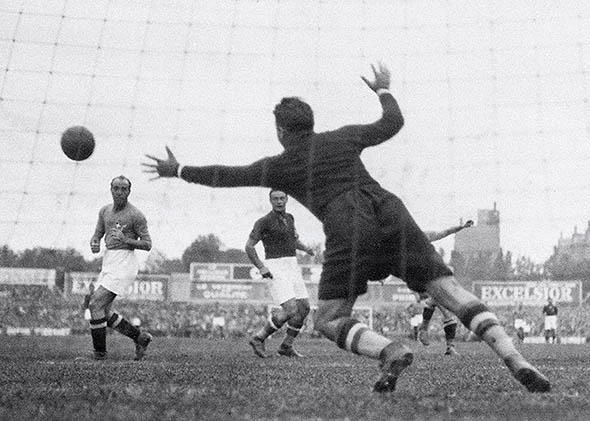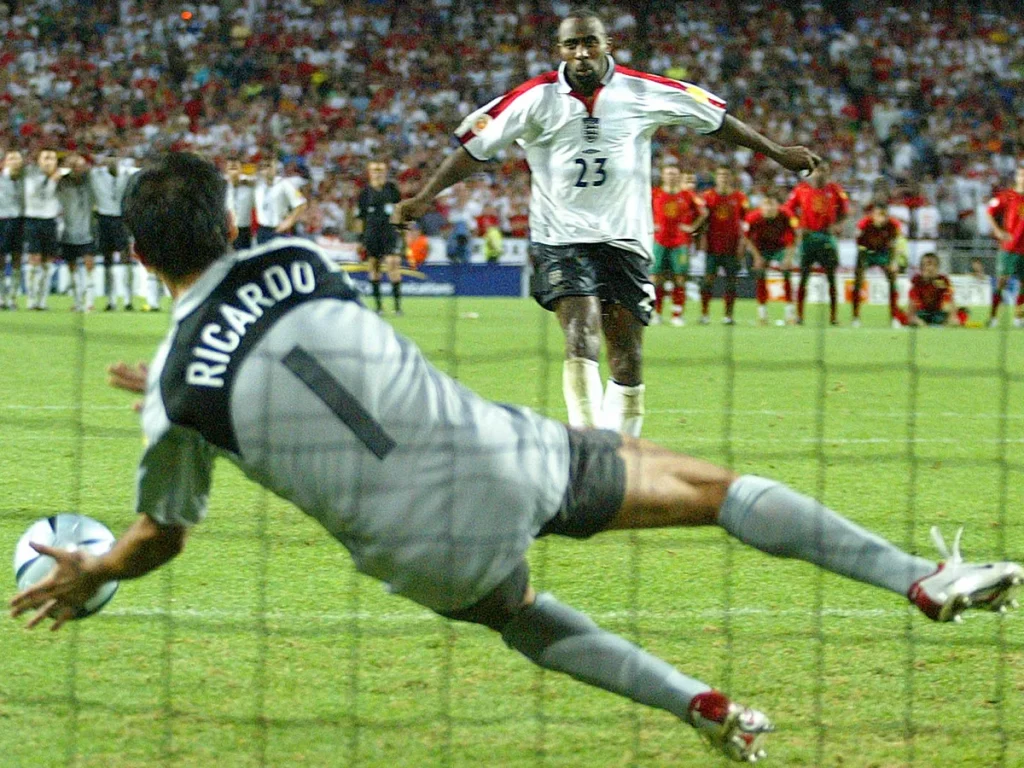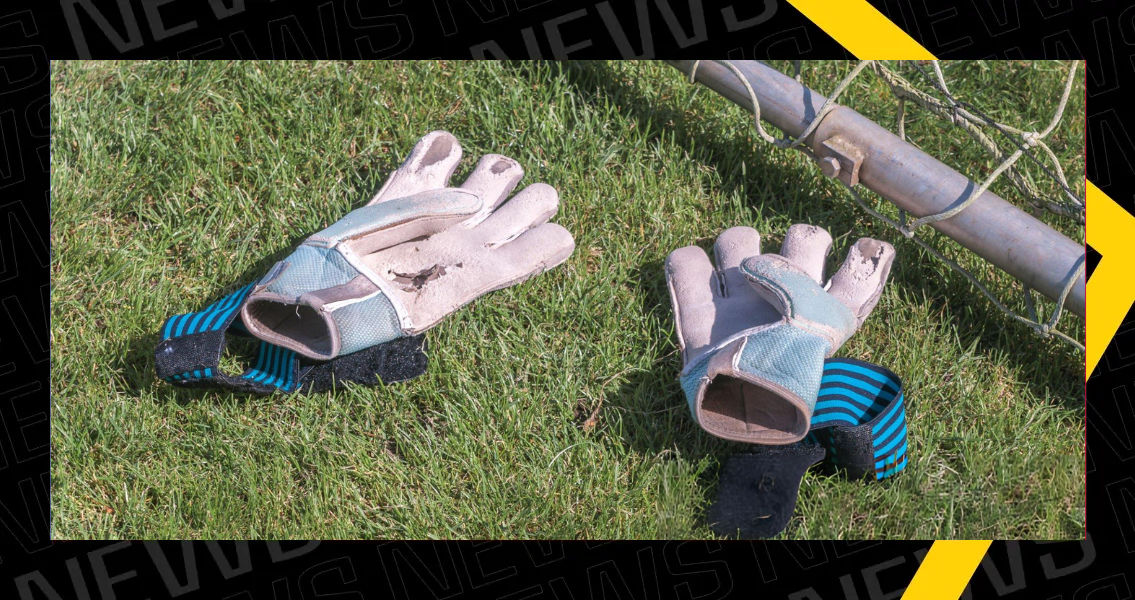In today’s game, a goalkeeper stepping onto the pitch without gloves would seem almost unimaginable. Gloves have become visually and practically inseparable from the position. The sight of thick latex palms, finger-saving spines, and perfectly engineered grip surfaces is as iconic as a striker’s boots or a referee’s whistle.
Yet the story of goalkeeping didn’t begin this way.
For most of football history, gloves were not only optional — they were almost unheard of. And even in the modern age of high-tech equipment, a few rare figures have still dared to defend their goal with bare hands, defying convention and making footballing folklore.
This article explores the full evolution of gloveless goalkeeping: from the leather balls of the Victorian era to the rare modern rebels who revived the old tradition for a moment.


Watch Top Sports on setantasports.com
Watch the world’s biggest football action live and exclusive on setantasports.com, including every match from the Premier League, La Liga, Serie A, Bundesliga, and Ligue 1. Enjoy world-class coverage, expert commentary, and nonstop drama from the stars and clubs that define modern football.
Beyond football, Setanta Sports also brings you the very best of global sport — UFC, Formula 1, basketball, tennis, and more — all in one place, anytime, on any device.
To get a discount on your subscription, you can use the following promo codes:
NEWS25 – 30% off a monthly subscription
YEAR25 – 30% off a yearly subscription
You can also begin your subscription by clicking on any of the banners below.
The previous promo codes — NEWS24 and YEAR24 — are still active.
The Early Era (Late 1800s – 1930s): Goalkeepers With No Gloves as the Norm
In the earliest decades of football — from the codification of the sport in the mid-19th century through the interwar period — goalkeepers almost universally played without gloves.
Why?
- Gloves for sport simply didn’t exist.
- Winter gloves were made of wool or cotton, which became soaked, slippery, and heavy.
- Footballs were made of thick leather that absorbed water, making them extremely heavy — yet keepers still preferred bare hands because they offered better “feel.”
Famous gloveless keepers of the era
- Sam Hardy (England, early 1900s) — widely regarded as England’s first great goalkeeper.
- Elisha Scott (Ireland/Liverpool, 1920s) — one of the longest-serving keepers in history; famously played bare-handed.
- Ricardo Zamora (Spain, 1920s–1930s) — arguably Europe’s first superstar goalkeeper; no gloves throughout his prime.
- František Plánička (Czechoslovakia, 1920s–30s) — known for extraordinary bravery and reflexes, achieved everything without gloves.
The idea of padded palms, wrist support, or specialized grip simply didn’t exist.
The goalkeepers of this era relied entirely on raw hand strength, timing, and fearlessness.
The Mid-Century Period (1930s – 1960s): The Rise of Primitive Gloves
During the 1930s–50s, football began to modernize, but gloves still remained unusual.
What did goalkeepers use instead?
- Many carried a sponge or cloth to wet their hands for better grip.
- Some used bandages to protect injured fingers.
- Others wore simple leather gardening gloves in cold weather, but not consistently.
Even by the 1950s, gloves were not standard.
Legendary keepers who played gloveless (at least early in career)
- Lev Yashin (USSR) — the greatest goalkeeper of his generation, often played gloveless in the 1950s before later adopting basic gloves.
- Gyula Grosics (Hungary’s Golden Team) — known as the “Black Panther,” he played many matches bare-handed early on.
- Amadeo Carrizo (Argentina) — one of the pioneers of modern goalkeeping techniques, initially played bare-handed.
These keepers helped modernise the position — sweeping outside the box, commanding their area — but still without the protection that 21st-century goalkeepers take for granted.
The Birth of Modern Goalkeeper Gloves (1960s – 1970s)
The 1960s and 70s brought the first major evolution.
Key development:
Brands like Reusch, Uhlsport, and Sondico began designing gloves specifically for footballers.
However, grip technology was still basic.
Gloves were mainly for:
- Warmth
- Basic protection
- Rainy conditions
Many keepers still played bare-handed in good weather:
- Gordon Banks (England, 1960s) — wore gloves mostly in winter or rain; otherwise went gloveless.
- Pat Jennings (Northern Ireland/Spurs) — early-career matches without gloves.
- Dino Zoff (Italy, 1970s) — often trained without gloves, sometimes played early matches without them.
It wasn’t until the late 1970s that latex grip became the norm, finally making gloves more than just a luxury.
The 1980s: Gloves Become Standard — But Not Universal
By the 1980s, gloves were common, but not mandatory or universal.
Some keepers still trusted their bare hands.
The most famous 1980s gloveless case:
Simon Farnworth – Bolton Wanderers (1986, Wembley Final)
Farnworth played the entire 1986 Freight Rover Trophy Final without gloves — considered the last fully gloveless goalkeeper in a senior English match.
By this time, playing bare-handed was considered unusual, even risky. Farnworth’s match is often seen as the symbolic end of true gloveless goalkeeper tradition in England’s professional pyramid.
The 1990s: The Last Generation of Occasional Gloveless Keepers
By the 1990s, gloves with latex palms and cushioning had become fully integrated into the position.
Yet a few notable rebels remained.
Bernard Lama (PSG/France)
The most famous modern keeper to regularly appear without gloves in the top divisions.
- Known for elegance, acrobatic reflexes, and unorthodox style.
- Sometimes refused to wear gloves because he believed feel was more important.
- Later admitted his fingers suffered for his artistic bravery.
Lama is often considered the last major top-flight goalkeeper to occasionally play gloveless by choice.
The Modern Era (2000s–2020s): Gloves Are Universal — Except for a Few Extraordinary Moments
Today, gloves are:
- technologically advanced
- safer
- designed for weather
- mandated by clubs
- essential for preventing finger injuries
Yet even in this advanced era, a few rare cases stand out.
Ricardo Pereira – Euro 2004: The Most Iconic Modern Gloveless Moment
During the Portugal vs England quarter-final, Ricardo made football history by:
- removing his gloves before a penalty
- saving Darius Vassell’s shot bare-handed
- scoring the decisive penalty himself
It became one of the most famous psychological gambles in tournament history — and the most iconic modern example of deliberate gloveless goalkeeping at the elite level.
Kerly Theus – Haitian Women’s Championship Final (2015/16)
A remarkable but lesser-known story:
- In the Haitian women’s D1 final, Kerly Theus played the entire match without gloves.
- Despite conceding several goals, she made critical saves.
- This remains one of the only fully documented gloveless appearances in a modern national championship final.
Why Goalkeepers Stopped Playing Without Gloves
By the 2000s, gloves became universal due to:
Major technological improvements
- High-grade German latex
- Finger-save technology
- Detachable spines
- Enhanced shock absorption
- Weather-specific models (dry, wet, hybrid)
Modern football demands
- Balls travel faster, curve more, and hit harder.
- Bare hands risk bone fractures, ligament damage, and dislocations.
Professionalisation of the position
- Dedicated goalkeeper coaches
- Biomechanics training
- Injury prevention programs
- Club medical guidelines
The gloves evolved from optional gear to essential professional equipment.
Are Goalkeeper Gloves Mandatory?
Surprisingly, even today, the Laws of the Game do not require gloves.
A goalkeeper may legally play:
- without gloves
- with cut/modified gloves
- with taped fingers only
But no professional club allows it except in emergencies or special situations.
The Legacy of Gloveless Goalkeepers
Although gloves dominate the modern game, the legacy of bare-handed keepers survives in football culture.
They symbolise:
- fearlessness
- individuality
- the roots of the sport
- a time when skill mattered more than equipment
- the evolution from instinctive, raw goalkeeping to today’s scientific, technical craft
The history of goalkeeping can be measured not only in trophies and saves, but in the transformation from bare hands to technology-driven performance.
From Leather Balls to Latex Palms
The journey from the gloveless pioneers of the early 20th century to the rare modern exceptions like Ricardo and Kerly Theus is a story of:
- evolution
- bravery
- innovation
- stubborn tradition
- and the constant search for advantage in football’s most unforgiving position.
While goalkeepers today rely on gloves designed with aerospace-level technology, the spirit of the gloveless guardians — those who trusted only their bodies and bravery — still echoes through football history.
They remind us that the essence of the game will always be shaped by the individuals bold enough to stand alone, sometimes with nothing more than their hands.








